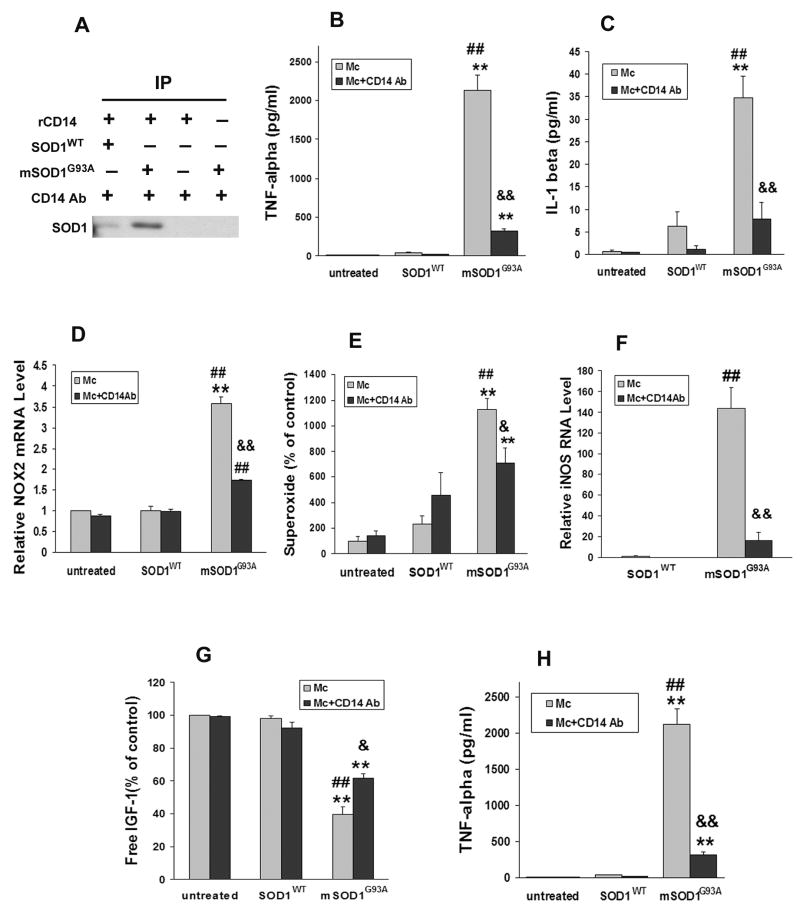Fig. 4.
mSOD1G93A activates microglia through CD14. A: Immunoprecipitation with anti-CD14 antibody and subsequent western blot with anti-SOD1 antibody showed binding of mSOD1G93A to rCD14 was greater than SOD1WT. Negative control included incubation of mSOD1G93A only or rCD14 only with anti-CD14 antibody. B-G: The blocking CD14 antibody (1 μg/ml) attenuated mSOD1G93A-induced microglial activation by suppressing the release of TNF-α (B), IL-1β (C), NOX2 mRNA (D), superoxide (E), iNOS expression (F), and increasing the production of free IGF-1 (G). H: WT or CD14−/− microglia were treated with 1 μg/ml SOD1WT or mSOD1G93A for 2 days. mSOD1G93A induced CD14−/− microglia to produce less TNF-α than WT microglia. Data shown as mean±SE of at least three independent experiments with duplicate or triplicate wells. Mc = microglia; SOD1WT = wild-type SOD1; mSOD1G93A = mutant SOD1G93A; Ab = antibody. *p<0.05; **p<0.01 vs untreated microglia; ##p<0.01 vs SOD1WT-treated microglia; &p<0.05; &&p<0.01 vs mSOD1G93A-treated microglia.

